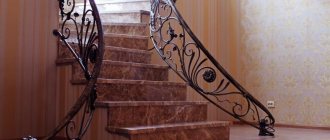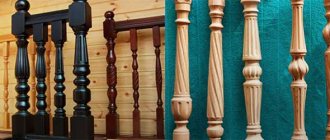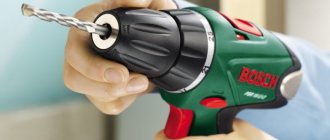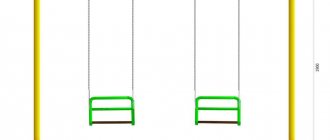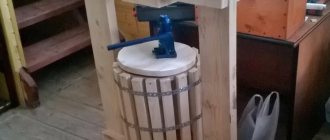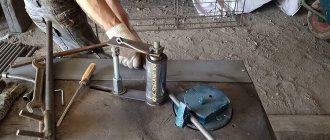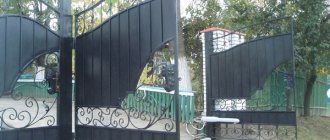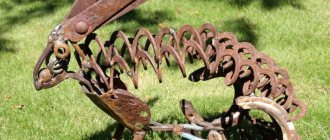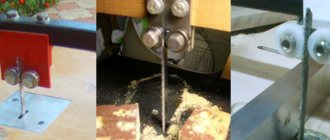Blacksmithing is one of the oldest methods of metal processing. However, even in our age of high technology development, it has not lost its significance and is even gaining great popularity.
Forging with your own hands is a rather difficult technological process; for this you need to know at least the basic techniques for working with a workpiece, as well as the rules for heating and hardening the metal. You also need to have an idea of how to use the equipment. What skills do you need to have to make products using the blacksmith method and how to forge metal?
A little history + interesting facts
Interestingly, one of the most common surnames in the whole world comes from blacksmithing. In Russia it is Kuznetsov, in France Ferrand, and in Britain Smith. This shows how widespread this craft was and remains in this world.
It is generally accepted that the basis of the word “cunning” is a verb such as “forge.” The fact is that most tribes and peoples believed that blacksmithing was something obscure and shrouded in a terrible secret. The blacksmith (cunning) made forges, knitted fetters, and over time the word “cunning” became synonymous with wisdom, skills and abilities. After some time, it became synonymous with evil plans and intentions. At the same time, such common phrases as “forge your happiness” and “forge your destiny” began to appear, which are exclusively positive in nature.
With the large-scale unification of production and the use of such types of equipment as stamping, rolling, the use of control through computer software almost ousted blacksmithing from the industry, but, nevertheless, it remained and is now incredibly popular among designers, as well as specialists who are involved in design interior A modern blacksmith knows how to make products that will be used as fences, stairs, as well as in the role of architectural design of buildings, etc.
In the 21st century, this has led to the fact that the design of forged products is done in special 3D design programs, which are designed to develop parts for various purposes. Open forging is used for many types of metal. Using this operation, it is possible to make household items, as well as items that are of exceptional artistic value.
By the way, this method of metal processing is also used by jewelers. By the way, gold is considered the most malleable metal, since it has incredible ductility, fluidity, ductility and many other properties that make it possible to make incredibly beautiful and almost priceless products from it. You can look at photos and videos of forging metal, in particular gold. In practice, only two types of forging are most often used - cold and hot.
Style matching
Forged gazebos, benches, arches and bridges are very popular, as with their help you can add variety and fresh notes to almost any landscape design. These decorative elements allow their authors to bring to life a variety of creative ideas and fantasies.
However, we should not forget about style consistency, which must be carefully observed. The selected samples of forged products should in no way fall out of the general style of the space and the buildings located on it. It is necessary to carefully study the selected samples of artistic forging. Otherwise, the selected element may not fit into the overall picture and look foreign, even if it is very beautiful in itself.
As a rule, wrought iron products go very well with almost any type of landscaping. French parks and English lawns easily accept this style; moreover, such products emphasize their elegance, and sometimes pretentiousness. For the Russian style of designing personal plots, such decorative elements are as typical as, in fact, for the Italian flavor with marble pools and fountains.
An important role here is played by the ornament itself, as well as the number of forged elements in it. The abundance of all kinds of small details, the intricate and lush design is not suitable for every style. The Baroque style is suitable for a plot with a large territory, where the house and other buildings are made in the same style. At the same time, there are no special restrictions for a light and sophisticated product. It fits organically into any design.
Basic methods of forging metal
Free forging can be done if the metal is heated to the required level. This method is also called hot forging, and until recently it was the only and main method of producing forged parts. But over the past few decades, the cold forging method has become no less popular. It differs from hot in that its use makes it possible to save on production sites; there is no need to maintain an energy-consuming forge in working order, etc.
Hot forging
As already mentioned, hot forging is possible if the metal is heated to temperatures where it changes its strength characteristics and becomes plastic, which makes it possible to process it relatively easily using impact tools and other devices. The hot processing method involves the use of special metal processing technologies, which make it possible to make the finished products more diverse.
But besides the advantages, there are also some disadvantages of the method. These include the fact that heating the metal requires the presence of a forge or muffle furnace. Let us note that such equipment, in addition to its price, will be expensive in the future when used, since you will need to pay for its maintenance and fuel.
Also, using an open source of fire is far from a safe activity and requires craftsmen to adhere to increased safety measures. In addition, hot forging requires that the craftsman have certain knowledge and skills to understand the temperature parameters of different types of metal.
Hand forged
Hand forging of metal must be done in special workshops that are equipped with everything necessary.
The list of equipment includes the following equipment:
- Air exhaust system.
- Muffle furnace or forge.
An anvil, which is a large metal pig (and weighing up to ¼ ton) may have technological devices such as calibrated holes or horns. To make an anvil, 45-number alloy steel is required. On an anvil, you can forge metal with your own hands and give heated workpieces the required sizes and shapes. In addition, you can even forge sheets on an anvil.
Cold forging
Most cold forging work is performed on equipment designed according to special drawings. You can list a specific list of equipment that should be used in cold metal processing. Typically, such equipment can show its effectiveness when performing a large volume of work for the architectural design of structures and buildings.
Among the equipment that is used to produce products using the cold forging method, we name the following:
- Torsion bar, with it you can twist the rod around its own axis.
- Wave, wavy parts are made on it.
There are only a dozen units in the equipment park for cold forging. Some of them can work from the operator's muscular system, while others work from the drive. Some craftsmen make similar equipment themselves, and also create modifications.
What about the cost of the devices?
Many strive to create homemade options, because finding models under ten thousand rubles in this segment can cause serious difficulties. But factory-made machines also always remain relevant, especially if you want to organize your own business with different capabilities.
Sources
- https://intehstroy-spb.ru/stanki/holodnaya-kovka-svoimi-rukami-stanok-chertezhi-process.html
- https://remboo.ru/dizajn/remeslo/holodnaya-kovka.html
- https://vopros-remont.ru/obshhie-voprosy/xolodnaya-kovka/
- https://podelki.expert/stanok-dlya-xolodnoj-kovki-svoimi-rukami/
- https://metmastanki.ru/stanok-ulitka-dlya-holodnoy-kovki
- https://sdelairukami.ru/konduktor-ulitka-dlya-holodnoj-kovki-svoimi-rukami/
Types of blacksmithing
Metal forging is performed using a mechanical or manual impact tool - this can be a press or a sledgehammer, and the press can be powered by a hydraulic, electric or pneumatic drive. Stamping and forging make it possible to obtain parts that vary in weight and size.
The use of forging makes it possible to increase the mechanical parameters of steel and optimize the internal structure. It is for this reason that parts such as connecting rods are made using forging or stamping. Forging can be divided into the following types - manual and machine. For manual work, hand-type percussion tools are used, for example, a sledgehammer and a hammer, and all processing work is performed directly on the anvil.
Machine forging is required for bulky and heavy workpieces, which are then processed under pressing equipment, while smaller ones with low weight can be processed with a hammer.
Processing of manufacturing materials using blows, in turn, is divided into processing in stamps and free forging. The second type involves compression of the workpiece between the base and the press. The formation of the finished product occurs thanks to the auxiliary tools used by the blacksmith. When stamping, the metal receives dimensions and shape within the die of the tool.
In order to make individual parts, you must first make a separate stamp. In fact, stamping and forging are intermediate operations in technology that help make workpieces, which in the future will be used and further processed by welding or milling.
What can you do yourself?
Many believe that it is impossible to create a high-quality forged product with your own hands, others believe that there is nothing particularly difficult in blacksmithing, since our ancestors were successfully engaged in it in ancient times. Both of them are wrong. In order to forge even a small element yourself, you need not only tools and skills, but also knowledge of the properties of metals. Hot forging is hard work in conditions that are very far from office conditions. What to do?
If you don’t want to build a forge and master the technology of blacksmithing, you can limit yourself to an analogue of artistic forging. We will create a welded structure from metal profiles and rolled metal, which can be decorated with ready-made artistic forging parts. For this we will need: a source of electricity; a flat surface for assembling the product; grinder with metal brushes, cleaning and cutting wheels; non-stretch rope, marker; hammer, two pins; welding machine with mask, gloves and electrodes.
Even without a forge, you can eventually learn how to make real masterpieces
We will use metal profiles and rolled metal as materials. It is better to take the latter with a smaller cross-section, since then we can bend it without resorting to special heating conditions.
- Select a drawing. Do not complicate the sketch that you will have to draw, because this is your first product and metal is not a particularly plastic material.
- We buy metal. It should be assumed that the length of a standard rod is six meters. You need to calculate your need for metal and take it with a small reserve.
- Treatment. It is better to immediately clean the delivered material from rust. Then it will be more difficult to do this. To do this, we use a metal brush placed on the grinder.
- Frame assembly. On a flat surface (building berth, workbench, table) we make a frame for the product. Its dimensions are taken into account based on external surfaces. Each of the 4 corners of the frame will have a weld. To prevent the frame from warping, we first grab one of the sides. It doesn’t matter which one comes first. Apply a few drops of welding agent to the upper and lower corners, and then level the diagonal by tapping on the unwelded corners. Then we weld the two remaining corners.
- Measurements. We apply the future drawing on a scale of 1:1 to the surface (table, chipboard, asphalt). To measure its elements we take a rope. We apply the rope to the elements of the drawing, as if to a stencil. This is how we find out the length of the segments into which we cut the rods.
- Deformation. To deform the workpieces, you need to create a device: on a flat surface, weld two studs 2-3 cm from each other. Using them and a hammer, we gradually bend the rods, constantly comparing the result with the stencil.
- Assembly and welding. We lay out the elements on the stencil, assembling the design and trimming the excess. Carefully weld the product on one side and then on the other.
- Cleaning. We clear out everything unnecessary.
- Finished parts. We buy ready-made forging elements that will serve as decoration for the base. We weld them to the places intended for them, and clean the welding points.
- Primer and painting. White primer is used so that imperfections can be seen when painting. The properties of the paint should be compatible with the primer.
- Chic and shine. Special aging or gilding will add attractiveness to the product.
The resulting product will differ little in appearance from a forged one, and with certain skills that are developed with experience, you can learn to create real masterpieces.
Types of modern equipment
Forging and stamping equipment
On an industrial scale, a lot of forging and stamping equipment is often used, which can be classified according to the following parameters:
Temperature of the workpiece being processed. For this purpose, forging machines are used, as well as equipment for cold and hot stamping (volumetric and flat).- For operations performed on equipment. They can be divided into main, preparation and finishing KShO.
- By type of supply and removal of finished products from the workspace. In practice, they use equipment on which all the described operations can be performed in manual, semi-automatic and automatic modes.
- By type of drive. Stamping machines and presses can be powered by compressed air, hydraulics, or electricity.
- According to the key parameter, this is usually the nominal force that is created using the press, or the working torque.
Induction heaters
Before hot working (hot forging of metal), the workpieces must be heated to a certain temperature level. Various types of heating equipment are used for this task, and this list includes induction heaters. In them, the workpiece is preheated before stamping, forging, bending and other operations.
Please note that this form of heating has a number of advantages over other heating methods, for example, over electric or gas.
In particular, they note:
- The use of induction type heaters makes it possible to reduce energy costs and this is important, especially with the constant increase in tariffs, it also makes it possible to make the product cheaper, due to which sales will increase.
- The use of heaters makes it possible to increase labor productivity, since induction heating makes it possible to reduce the time spent warming up the part.
- In automatic furnaces, due to the accuracy of installation and positioning of the workpiece in the inductor, the heating accuracy increases.
- Heating the workpiece in such furnaces is characterized by a small amount of scale, which has a positive effect on the service life of the stamping tool.
- Installing induction-type equipment makes it possible to free up space in production premises.
Why is cold forging used and what products are produced?
Using hot forging, you can forge a product of almost any shape - from a ship anchor and a cart axle to a metal rose and a grape vine.
Cold forging is used to produce a limited number of elements from which a talented designer can assemble a custom product.
A wide variety of products are made using the cold forging method. These are, first of all, elements of gratings and fences - both the rods themselves and the crossbars, tops, and decorations. From a distance of several meters it is difficult to distinguish it from a forged lattice. Any lattice will be enlivened by curls and spirals that form intricate patterns and ornaments. An ordinary fence, therefore, in addition to its utilitarian purpose, also acquires artistic value. For this you will need a bend, a snail and a torsion bar.
Wrought iron bench with table and lamp posts woven with vines
Forged stands for lanterns, railings for bridges over ponds, awnings and porches, tables and benches look great in the local area. And it’s a good idea to make the gazebo itself from a forged rod. Curls and spirals will give it unexpected lightness and airiness for harsh metal, and twisted supports will emphasize the upward desire.
Forged barbecues are also widespread today, also complementing the economic purpose with an aesthetic impression. The barbecue itself is lost among the canopy, patterned walls and supports, and the roof decorated with curls.
Parts of balustrades, staircase railings and balconies are also very popular. Curls and spirals are also widely used here, not only as decoration, but also as a structural element. A baluster twisted along the longitudinal axis looks very appropriate, and corner supports are often made from several rods twisted together. They also make the so-called on a torsion bar machine. “flashlight” - several rods bent in a spiral, connected at the ends by welding.
The next area of application of cold forging is details of room decoration and furniture. Door handles and latches, fireplace tools and hangers, umbrella stands and cornices for curtains and curtains - small curls and twisted rods are widely used here. Furniture is made both for garden furniture, which is not afraid of precipitation and changing seasons, and for home furniture, combining metal with wood and fabric.
Assembling the device
This version of the machine is used as an example because of its simplicity. Knowing the basic principles and sequence of equipment design, you can upgrade it at will. To assemble all parts of the equipment into a single whole, you will need to use:
- drill with carbide type drills;
- welding machine;
- a saw cutting metal or a hacksaw;
- metal sheet of the selected size;
- round metal pipe;
- metal rod;
- bearings of different sizes;
- bolts size M8.
To assemble a cold forging machine with your own hands, you need to use a proven sequence of actions:
- Initially, you need to assemble a stand that will serve as a support. To do this, all its components (pipe sections of the same size and the joints between them at the top and bottom edges) must be connected into a single whole. The design may resemble a stool in appearance. The connection is made using a welding machine, and the sections are cut with a saw.
- The next step is cutting the metal sheets. You should get circles of equal diameters and four triangles with equal sides. Triangular-shaped elements must be welded to the bottom of the connected pipe structure in such a way that something similar to a pyramid is formed. The base, which has a wider area, must be welded at the central point of the cut circle.
- Four strips that are located horizontally must be attached to a circle with an already welded element. This should be done using bolts; for this you will need a drill to make the holes.
- The next step is the construction of the handle. To do this you need to use two rods of different lengths. Their sizes can be determined by correlating them with the diameter of the circle. One rod should be commensurate with the diameter, the other should slightly exceed its size. When bending the first rod, you should maintain an angle of 30 degrees. Then weld both rods to each other, and then weld another rod into the lower part. There should also be a jumper between the first two sections, to which a lever is attached by welding, which should maintain the direction towards the structure made of rods.
A bearing for future directional variability in the device must be attached to the end of the attached lever, as well as to the segment located at the bottom of the structure. The upper section serves as a mount for a metal coil, which must be installed horizontally - it makes it possible to bend the metal. On the lower side of the segment, where there is a free end, a hole should be made equal in diameter to the size of the pipe section.
The last step in the algorithm of actions when constructing a machine for cold forging with your own hands will be the connection of the designed handle with a part of the device similar to a “pyramid”. These elements are fixed after putting on the handle with a wide-diameter nut, to which it is first necessary to weld a metal circle, which will allow the template itself to be attached to the machine. Next, the “snail” template is attached by welding.
Conclusion
Anyone who decides to take up forging seriously and make a cold forging machine with their own hands should be very scrupulous at the stage of creating drawings and calculations. Otherwise, the creation process is quite simple, and once you understand the principle of equipment design, you can come up with various variations of it that will help improve the product.
